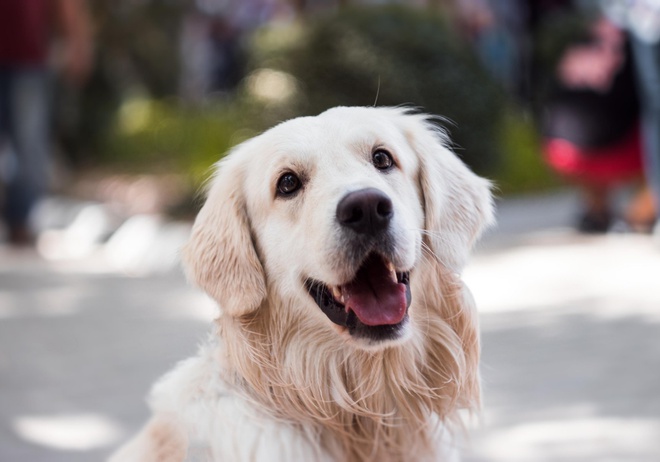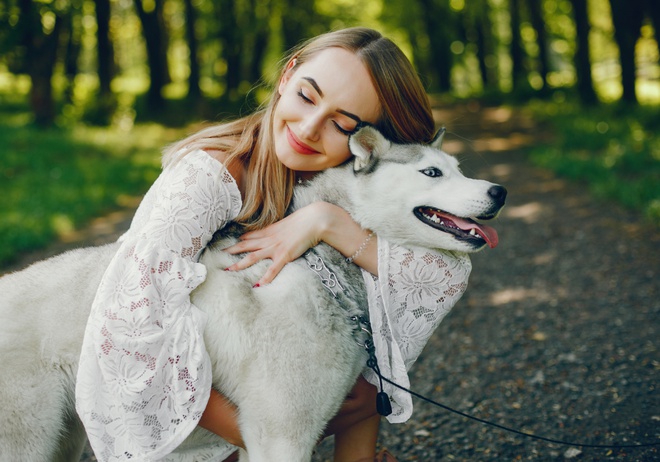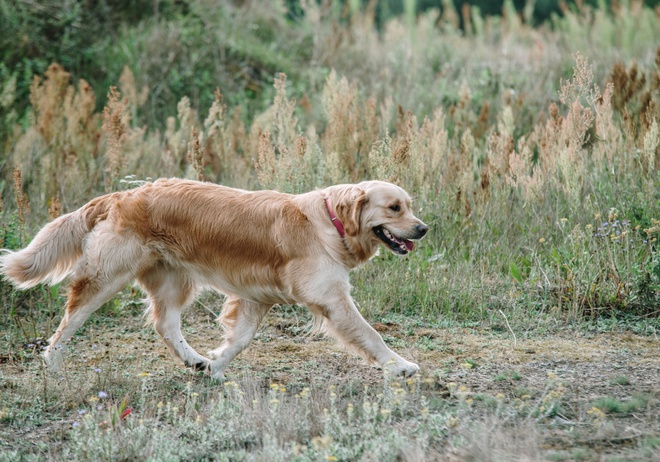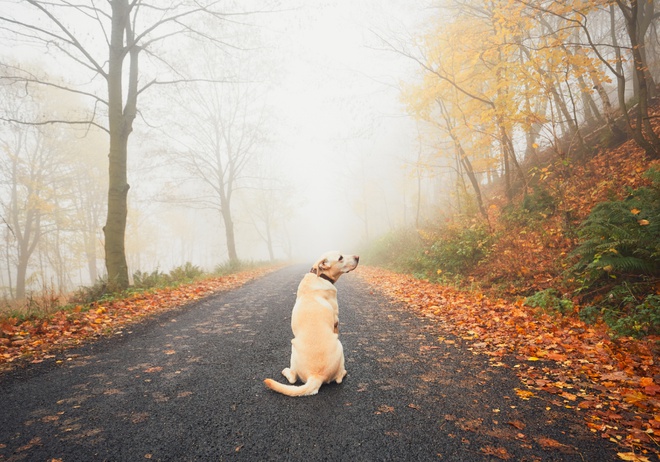How to prevent your dog from being stolen?
In this article you will find out what you can do to prevent your dog from being stolen.

Reading time : 6 min
Dog theft, although not common, is an ongoing problem. The number of dogs stolen at the moment is increasing.
Due to the sharp increase in demand for puppies during the pandemic, and the resulting price hike, criminals see dog theft as an easy way to make money.
TOPICS
How to prevent your dog being stolen?

Dogs can be stolen for various reasons. Purebred dogs can be sold to pet stores, puppy mills or breeders. Smaller dogs can be used for dog fighting rings. What’s more, some dogs are even stolen for their fur.
Losing your pet must be heart-breaking, especially if they have been stolen, because you don't know what may befall them. There are some steps you can take to reduce the risk of your dog being stolen.
How to prevent dog theft?

Keep an eye on your dog at all times
The most important thing to do is keep an eye on your dog consistently. When you are out in public ensure you know where they are, and if they can't be trusted off-leash, don't hazard it.
Keep your canine friend on your property when you are at home, don't allow them to meander around the area.
Secure your garden
Only allow your dog in your garden if it is secure. Fences should be checked for gaps and gates installed to keep your dog enclosed. Keep your dog in sight in the garden, don't leave them outside unattended.
Front gardens are particularly vulnerable to dog thieves. Install a bell on the gate so you can hear on the off chance that somebody opens it.
Don’t leave your dog in your car
Leaving your dog in your vehicle with the windows down makes them a sitting target to thieves. They can without much of a stretch power open windows or reach in and snatch your dog. If you are on your own, you should always take your pet home before going to a shop.
Don’t leave your dog outside shops
For quite a while it has not been uncommon to see a dog tied up outside a shop. However, dog theft is on the increase and a few dogs have already been stolen in this situation.
It is therefore best not to leave your dog alone. If you need to stroll to the shops with your dog, take somebody with you to sit outside with them.
Beware of strangers
Be careful about any individual who goes to your front door or admires your dog in the park. Do not allow them to hold your dog or take photographs with them, it could simply be a way of distracting you.
Be careful with strangers asking you inquiries about your dog, bending down to stroke them or vehicles slowing down around you.
Most of us love sharing details regarding our puppies, however, don't share detailed information about your dog’s breeding, cost, or where you live.
Collars, tags and microchips
Your dog must have a collar with an ID tag on it. Put your second name, telephone number and address. Do not to put your dog's name on the tag, as somebody attempting to steal them will attempt to call their name to get them to come over.
Just a tag isn’t enough, as it could be easily removed by someone with bad intentions. Get your dog microchipped and state on their tag that they are microchipped. All puppies in the UK should legally be microchipped by about two months.
Fit alarms
Have alarms installed on your garden gates to alert you to an intruder. An alarm is an effective way of stopping a thief in his tracks. He will be shocked by the sudden noise and frightened by the attention it will bring. With any luck, he will run away and leave your dog alone.
Using a GPS pet tracker
Attaching a GPS to their collar can give you, the owner, real peace of mind. A GPS tracker is light and small, and it isn't uncomfortable for the dog. It is extremely helpful for dog owners to follow their pet’s movements. Furthermore, if the dog isn't returning home, it is easier to track their dog.
The tracker also has a recall option with an integrated clicker and once trained, your dog will come back every time their owner clicks it.
Vary routes and time of walks
Vary your times of walks and routes; some dogs are targeted and snatched during walks after being watched previously. Swap some outdoor walks for indoor or garden training. This will also benefit your dog as it is more stimulating.
Check where you buy your dog from
Another important way to help protect all dogs is to prevent others from making a profit by dognapping - don't buy a stolen animal. Many people want to 'rescue' a dog they see being sold, but they are only encouraging animal thieves to continue their business.
Don't buy dogs from a website or online classified ad, from flea markets or from roadside vehicles. Do your research to ensure you are dealing with a reputable breeder or, better still, rescue a dog from a shelter.
Find out the 5 most important steps to find your lost pet
All the information you need to find your beloved companion
What to do when the damage is done

If the worst happens and your dog is stolen, here’s what you can do:
Dial 999 to talk to the police
If you suspect your dog has been stolen, call 999. Insist that the police record it as a theft rather than a lost pet and obtain a crime reference number.
Provide information about your location, a description of the person involved, the make, model, colour and registration of the vehicle and their direction of travel.
Contact the microchip database
Report the theft to the microchip database. This way, if someone tries to re-register the chip number, you will be informed. In addition, if the dog is found and checked, it will be possible to reunite you.
Contact your local authorities and dog warden
Report the loss to the dog warden of your local council and all other neighbouring local authorities. Give them your contact information to be contacted if needed.
Put up lost pet posters
Make posters and put them up in places close to your home as well as in relevant places such as vets, your local dog park, etc. The poster should include a clear picture and details of the circumstances.
Publish the theft in your local newspaper
Consider calling your local newspaper to publicise the theft and warn others to be on the lookout for your four-legged friend and similar cases.
Keep also an eye out for pets for sale or pet adoption ads in newspapers or online, checking carefully for descriptions that match your pet. This is where pet thieves look to profit from stealing your pet. Your pet may end up with kind people who may realise they have a stolen pet and return them to you.
Most stolen dog breeds in the UK

Here are some of the most stolen breeds in recent years.
Staffordshire bull terrier
The Staffordshire Bull Terrier is one of the most famous dogs in Britain. In this way, it is not surprising that they are probably the most stolen dogs. In the last five years, Staffies have accounted for 19.4% of dog thefts.
Chihuahuas
Not only are Chihuahuas a very popular dog, but their tiny size, unfortunately, makes them easy targets for criminals. This popularity also contributes to their high resale price, with 163 being stolen in the last five years, although that’s still fewer than half the number of Staffordshire Bull Terriers.
However, Chihuahuas are usually much more feisty than their small size indicates, which means that Chihuahua thieves often find that their eyes have been bigger than their bellies!
French Bulldog
The French bulldog is one small breed of dog that is growing in popularity in the UK at such a rate that the supply cannot meet the demand.
Pedigree French bulldogs often cost £2,000 or more, and demand for the breed, plus the potentially high purchase price, makes them very desirable to thieves.
German Shepherd
The German shepherd could be a terribly versatile dog that's well-liked each as a pet and in working roles.
Adult German Shepherds are usually speculative concerning strangers and will not conform to go with somebody they do not know, however puppies and younger dogs of the breed are often targeted.
Continue reading our guide
This article is part of a complete guide on the subject. Do not miss the next chapters.
How to find a lost pet ?
Discover the 5 most important steps
All the information you need to find your beloved companion


